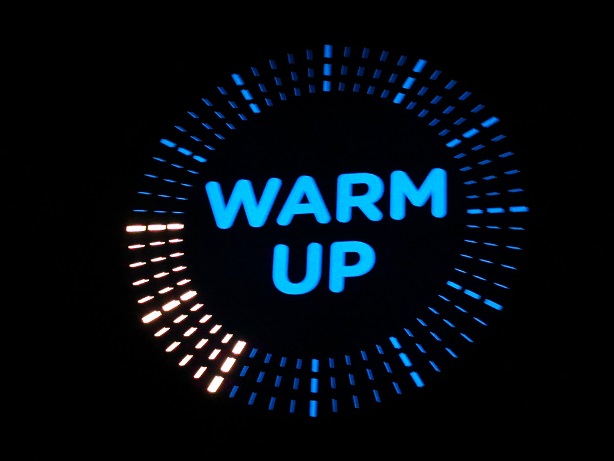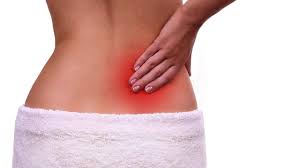Never skip your warm-up
I have done many different sports in my life – team sports, individual sports, martial arts, contact sports, you name it. Over the years I have been trained by numerous coaches and let me tell you, many of them disregarded the importance of a warm-up. Some of them were simply too focused on the technical part of the sport that they didn’t give us enough time or decent instruction to perform a good warm-up.
There is no exception when it comes to performing workout routines from home. You should always warm-up before starting with more intense exercises. A lot of people think of working out at home differently like it’s not real practice. Well, it depends on what kind of exercise we plan on doing, but in general, I personally believe that we should always warm-up first.
A muscle is like a car. If you want it to run well early in the morning, you have to warm it up.Florence Griffith Joyner
The definition of “warm-up”
We use the term “warm up” a lot, so let’s take a look what is its actual definition in the dictionary (i. e. workout warm-up). A workout-related warm-up is the act of preparing for an athletic event by exercising, stretching, or practicing for a short time beforehand. It can be used as a noun (a warm-up) or a verb (to warm up).

Even the definition itself is a bit misleading. Many people think stretching is a good warm-up. Unless you want to injure yourself, you should never stretch before actually warming up. The so-called “fast stretch” may be used as a part of a warm-up routine but should take place towards the end of it.
An actual stretch or often called a “deep stretch” should be performed at the end of your workout. If you want to learn more about stretching you’re more than welcome to read about it here: The importance of stretching.
What happens to our bodies during the warm-up
Ok, we’ve covered the term, so now we can take a closer look at the importance of a warm-up. Why is it so important? What exactly happens to our body in the process of warming up? Well, the warm-up is performed to prepare the human body for activities that will demand increased blood flow, hence a higher pulse rate. When we start warming up the heart rate and the blood circulation slowly increase, the joints loosen and the muscle temperature rises, which makes them more flexible.
Our body is literally warming up. If we’d take a thermographic camera and film a person starting with the warm-up, we’d see muscles temperature rising, or in the case of a thermographic camera, turning red. The warm-up itself is a consequence of respiration energy release in the muscles. According to scientists, over 70 % of the energy that powers your muscles is lost as heat.

To prevent body temperature from getting too high our heart starts pumping the blood faster (heart rate increase) since the heat is being transferred from the muscles to your skin via blood. As a consequence, the skin starts producing sweat, which represents the last stage of the cooling process. The latter is initiated by the heated blood when it reaches a part of your brain called the hypothalamus.
Besides the heat removal, the increased heart rate also provides our muscles with more oxygen. So, fresh cooler blood filled with oxygen comes into your muscles, deposits oxygen, and removes the excess heat. Oxygen-depleted and warmer blood then leaves the muscles and goes to our skin where the heat transfer occurs as described above.
Why should you always warm up?
A warm-up will prepare your body for all sorts of exercises. Even if you’re performing workout routines from home you should never skip the warm-up. It will help you with better regeneration since you’ll prevent micro-injuries by warming up properly. You’ll also greatly reduce the chance of injuring any of your soft tissues (tendons, ligaments, muscles).

You can think of your muscles as they were rubber. Now imagine cold rubber. If you try twisting it or bending it or even stretch it, there is a great chance you might rupture it. But if you heat it up first, you make it more flexible, which will enable it to return to its original state after putting it through different stress situations.
A proper warm-up is also good for your heart and entire vascular system. Essentially, the heart is also a muscle and as such, it needs a warm-up too. Increasing your heart rate gradually is a good way to go. By skipping a warm-up you place potentially dangerous stress on the heart.

By warming up you also increase the rate of energy production, which will enable you to perform your workout easily.
Moreover, the muscle time response (i.e. flexing and contracting speed) increases with higher temperature, which again will make you perform better.
Now you know that there are many advantages of a proper warm-up. Do your best never to skip it!
How much time should you spend on your warm-up?
If you spend too much time warming up, you’ll miss the race. If you don’t warm up at all, you may not finish the race.Grand Heidrich
The time you need to get your body warmed up and ready for the actual workout depends greatly on the type of exercises you’re doing as your warm-up. Personally, I’ve found that 4 – 7 min can be enough for any kind of exercises you might perform at home.
Home Workout: Make It Count
In case you are not having success with your home workouts or are struggling to even get started, we have a solution for you. Get our free eBook, in which we reveal the 7 best tips on how to get the most out of your home workout.
You’ll not only be getting a highly valuable free report but also an in-depth guidance email sequence that will lead you through all the key steps of body transformation. Download the gift (trust us, you will be forever grateful for getting your hand on it).
